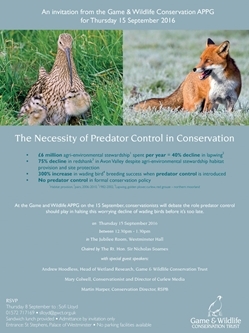 Waders such as curlew, lapwing, snipe and redshank are in rapid decline despite the millions of pounds invested in habitat improvements. Breeding numbers in the agricultural lowlands are now insufficient for population recovery. GWCT research has consistently proven that predator control can reverse this, yet there is reluctance to adopt this strategy into formal conservation policy. Conservationists and politicians will discuss the options left to save these threatened species.
Waders such as curlew, lapwing, snipe and redshank are in rapid decline despite the millions of pounds invested in habitat improvements. Breeding numbers in the agricultural lowlands are now insufficient for population recovery. GWCT research has consistently proven that predator control can reverse this, yet there is reluctance to adopt this strategy into formal conservation policy. Conservationists and politicians will discuss the options left to save these threatened species.
- £6 million agri-environmental stewardship spent per year = 40% decline in lapwing
- 75% decline in redshank in the Avon Valley despite agri-environmental stewardship habitat provision and site protection
- 300% increase in wading bird breeding success when predator control is introduced
- No predator control in formal conservation policy
Speakers
- Andrew Hoodless, Head of Wetland Research, GWCT
- Mary Colwell, Director, Curlew Media
- Martin Harper, Conservation Director, RSPB
Minutes
DOWNLOAD